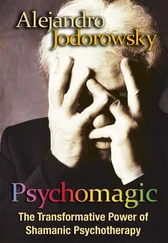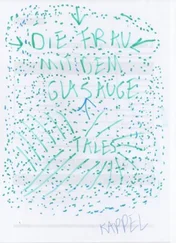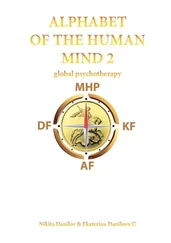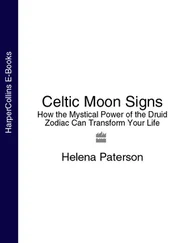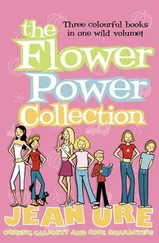Jodorowsky, Alejandro - Psychomagic - The Transformative Power of Shamanic Psychotherapy
Здесь есть возможность читать онлайн «Jodorowsky, Alejandro - Psychomagic - The Transformative Power of Shamanic Psychotherapy» весь текст электронной книги совершенно бесплатно (целиком полную версию без сокращений). В некоторых случаях можно слушать аудио, скачать через торрент в формате fb2 и присутствует краткое содержание. Год выпуска: 2010, Издательство: Inner Traditions Bear & Company, Жанр: Старинная литература, на английском языке. Описание произведения, (предисловие) а так же отзывы посетителей доступны на портале библиотеки ЛибКат.
- Название:Psychomagic: The Transformative Power of Shamanic Psychotherapy
- Автор:
- Издательство:Inner Traditions Bear & Company
- Жанр:
- Год:2010
- ISBN:нет данных
- Рейтинг книги:4 / 5. Голосов: 1
-
Избранное:Добавить в избранное
- Отзывы:
-
Ваша оценка:
- 80
- 1
- 2
- 3
- 4
- 5
Psychomagic: The Transformative Power of Shamanic Psychotherapy: краткое содержание, описание и аннотация
Предлагаем к чтению аннотацию, описание, краткое содержание или предисловие (зависит от того, что написал сам автор книги «Psychomagic: The Transformative Power of Shamanic Psychotherapy»). Если вы не нашли необходимую информацию о книге — напишите в комментариях, мы постараемся отыскать её.
Psychomagic: The Transformative Power of Shamanic Psychotherapy — читать онлайн бесплатно полную книгу (весь текст) целиком
Ниже представлен текст книги, разбитый по страницам. Система сохранения места последней прочитанной страницы, позволяет с удобством читать онлайн бесплатно книгу «Psychomagic: The Transformative Power of Shamanic Psychotherapy», без необходимости каждый раз заново искать на чём Вы остановились. Поставьте закладку, и сможете в любой момент перейти на страницу, на которой закончили чтение.
Интервал:
Закладка:
What therapy do you recommend for overcoming nightmares?
I began with Freud, and it was very funny: for him, dreams are repressed desires, frustrated desires, that sort of thing. I was also frustrated with Jung: I dreamed and then I prolonged the dreams in half-sleep, continuing the story, interrogating the dream to see what it wanted to tell me. Then I continued with awake-dreams, developing the imagination. There are many magnificent therapies. In lucid dreams, we get close to what the Senoi tribes do: they work with their dreams during the day, carrying them out through a kind of theater. In other schools, they sculpt them, make them into figures, paint them . . . This is how you introduce dreams into your real life, isn’t it?
But all of this is useful for when we are sick. Once you’ve cure yourself, you do not need to do anything. Simply live, simply dream. There is no repression.
Do dreams teach us the true nature of life?
Life teaches us the true nature of life. And the true nature of life is a mixture of dreams and life. Because all life is a dream! The dramatist Pedro Calderón de la Barca already said this. He had a very high level of consciousness for his time. When we live the now, this instant seems real to us, but an hour later it will be a memory, and the images of the memory have exactly the same quality as the images of a dream.
We could say that we are going to stage a dream and that everything, all of our comings and goings, will infiltrate the dream world and convert the dream. But what happens with dreams? Well, it’s not like that at all. We dream and our dreams infiltrate themselves into our real life. The dreams make themselves reality, just as reality converts itself into a dream. Everything you dream ends up being real.
You tell us we can access the departed who appear to us in our dreams and that they dwell in a place in our memory, that they can give us advice and help us . . .
We have a collective mind and a collective unconscious that exists in some realm. There must be a region of the dead that meets us in the collective unconscious. This region is called “hell” in some cultures.
It is through your dreams that you became conscious of the existence of magic, right?
In lucid dreams, I can voluntarily change some things, but only up to a certain point. I cannot change the whole dream but only a part of it. With magic the same thing happens. You can produce changes in reality, but you cannot change all of reality.
II
As the basis of your therapy are art and poetry fundamental?
I believe that all human beings must dedicate themselves to writing poetry for half an hour every day, without worrying if the writing is good or bad, if it will be commercially successful or not. Poetry as a constant in life purifies the ego. Every day we should carry out a free act, a little thing that serves others, like giving a chocolate to a child, simple things. I have come to true depravity in searching for goodness. Sometimes I put cash in the pocket of a sleeping homeless person, so he thinks he has good luck. I invent miracles. Even if you don’t believe in miracles, you can do little things to help others.
This room is full of thank-you cards asking what I desire as compensation for the help I bestowed. My response is: nothing, because I help freely. I do all this based on time I can set aside for others.
What do you use to keep you company when you create?
For thirty years, I have always worked with background music: Celtic harps that have a hypnotic effect. If I am very inspired, I put perfume in the bottoms of my shoes or draw enneagrams (a nine-pointed geometric figure symbolizing the fruits of the Spirit: love, joy, peace, patience, kindness, goodness, faithfulness, gentleness, and self-control) with a honey-soaked little paintbrush on the soles of my feet. And, in moments of creative drought, I dye my testicles red with vegetable dye.
You say art cures. In what way?
Art cures because we have to cure ourselves of not being ourselves, of not being in the present. There is a Hasidic phrase that says, “If you are not you, who? If this is not here, where? If it is not now, when?” If you are capable of figuring out the when, the here, and the who (the You), you are being yourself, and you have already cured yourself.
To create art is to know yourself?
Yes, but to know yourself is to know humanity and the universe. It is to pass from the singular to the plural.
Could you explain?
Think that the need for healing is produced by a lack of awareness. We become ill because we have cut our ties with the world. Illness is a lack of beauty, and beauty is the union. Illness is a lack of awareness, and awareness is union between oneself and the universe.
Which artists have fully achieved healing?
The most difficult thing in the world is to create sublime art. Very few people have achieved this. But I could cite René Daumal, who learned Sanskrit and was a student of Gurdjieff; he achieved it. Federico García Lorca is an opposite case: he could not achieve it, he did not know how to. When you read A Poet in New York, it makes you sad.
You have said that literature serves nothing if it does not heal. And if it only heals the author? Can art cure some and make others sick?
I remember some artists who said this world isn’t worth anything, that it is a pigsty, that we are going nowhere, that God is dead, and all those things. Bad literature is this. To expose your navel, to tell how you drank your morning coffee amid general disgust, with everything around you rotting. While the world is dying, I drink my coffee. Or I perform my little sex acts. This is old-fashioned. One must cross this neurotic curtain. I, for example, confess that I cannot read Marcel Proust. He’s too sick for me, and his neurosis can contaminate me. Every day I see neurotic cases, why would I want to read others? Nowadays Franz Kafka is on the loose everywhere! I go to mail a letter, and I find myself with Kafka in the post office: an employee full of problems.
What writers and painters would you save? Which would be in your prized curative art gallery?
What a question! You’re working with the established notion that the art world is like a prizefight: we decide which is the champion painting, the champion book, the champion symphony, and so forth. But I do not see the world like that.
In art, I see structures. For example, in filmmaking, rather than asking what’s the best picture, I would ask by genre: what’s the best western or the best drama. I have my house full of westerns. In my library there are novellas by Silver Kane and other authors, along with comic books, books of oriental philosophy, of Sufism, Kabbalah, magic, alchemy, psychoanalysis . . . I am a man of my time, and in my time there is the Internet. So one cannot and should not talk about personal work; we have entire masses of works by category, not by authors. The Internet has revolutionized all this. I had whole libraries. My human ideal would be an old dream: all the books of the history of humanity, all the painting in history, all the films, music, sculptures, everything.
And art that does not cure, you also include?
Though it does not cure—and this is another thing—it entertains. A healthy person can read Emil Cioran or Michel Houellebec and laugh a lot. However, I would not produce that kind of literature, because it is totally obsolete. But there it is. One can go from Kafka to Castaneda and continue to learn. In the same way that a person continues to evolve from one level of consciousness to another, art evolves from one level of consciousness to the next. It is collective and not solitary. I cannot say the best painter is Leonardo da Vinci. I will say he reached another level of consciousness, but as he was an individual, he could only reach to a certain level. If you pay attention, his machines lacked the motor because they lacked energy. These marvelous machines did not provide the essential, which is energy; they used primitive, limited forms of energy, based on pressure and water. Leonardo could not resolve this problem. His limitations were fixed in the humanity of that time, in its collective nature. Do you understand? If you ask me the classic question, “What book would you bring with you to a deserted island?” I would respond, “A computer with Internet access.” Obviously.
Читать дальшеИнтервал:
Закладка:
Похожие книги на «Psychomagic: The Transformative Power of Shamanic Psychotherapy»
Представляем Вашему вниманию похожие книги на «Psychomagic: The Transformative Power of Shamanic Psychotherapy» списком для выбора. Мы отобрали схожую по названию и смыслу литературу в надежде предоставить читателям больше вариантов отыскать новые, интересные, ещё непрочитанные произведения.
Обсуждение, отзывы о книге «Psychomagic: The Transformative Power of Shamanic Psychotherapy» и просто собственные мнения читателей. Оставьте ваши комментарии, напишите, что Вы думаете о произведении, его смысле или главных героях. Укажите что конкретно понравилось, а что нет, и почему Вы так считаете.

